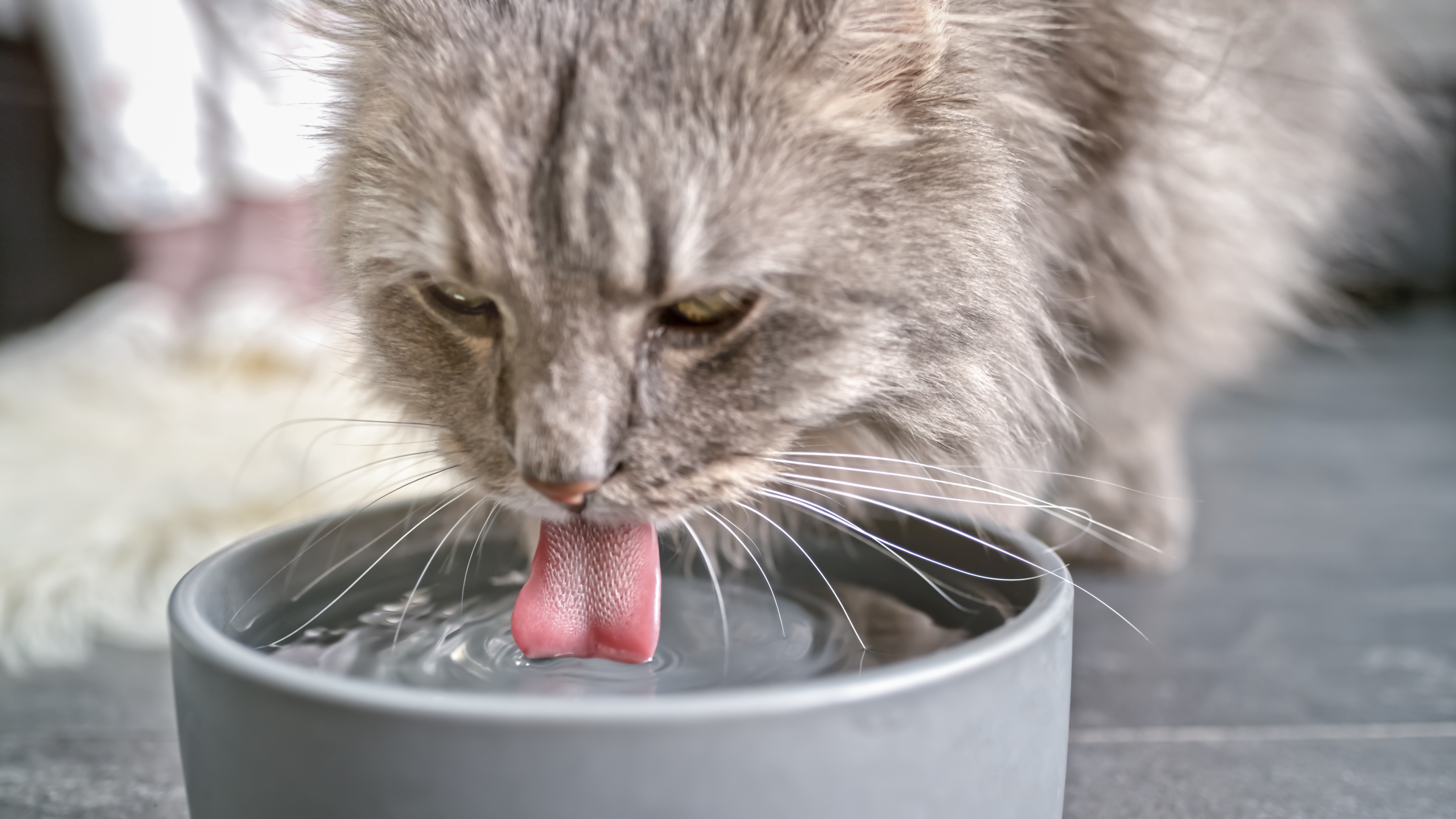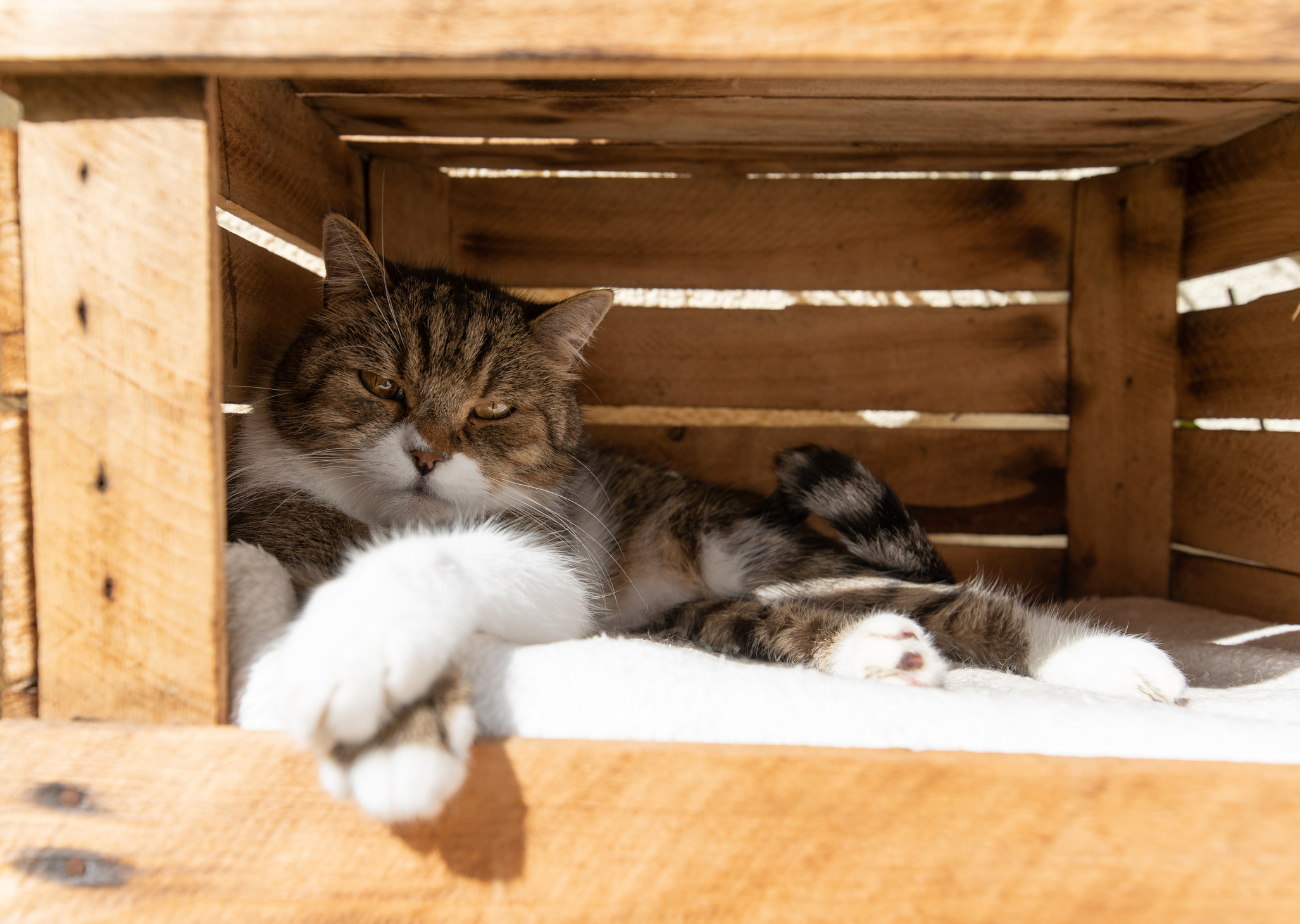
Heatstroke Can Affect Cats, Too!
As the weather starts to heat up and your family begins making plans to spend more time outdoors, practicing warm weather safety with your cat will be vital to keeping them happy and playful all summer long. Much like humans, cats that spend too much time in extremely warm environments—whether that is in a particularly hot house, a car or outdoors without the cover of shade—can suffer discomfort or distress from extended heat exposure.
However, unlike humans, your cat has far fewer ways to cool themselves off at their disposal. While you may be able to get rid of a layer of clothes or turn on the air conditioning, cats can only pant or sweat through their foot pads to shed excess heat. If this does not provide relief, and your cat’s body temperature continues to rise, they might first experience heat exhaustion and eventually hyperthermia (heat stroke), which could lead to serious organ damage.
In addition to the heat, cats that are particularly stressed or worked up, suffering from anxiety or have overexerted themselves with exercise can also develop hyperthermia. Cat breeds that have shorter faces, such as Persians and Himalayans, and cats that are overweight are also at a higher risk of experiencing heat stroke.
Recognizing the signs of heat stroke

As your cat begins to feel overheated, they will display several noticeable signs that they are feeling unwell. Recognizing these signs allows you take the necessary action to provide your kitty with immediate relief.
You might notice your cat become restless as they search for a comfortable area to cool off. Additionally, cats might begin grooming themselves more than normal in an effort to lower their body temperature, and their gait could be impaired if the heat causes them to become lethargic.
If your cat’s body temperature continues to rise and heat exhaustion sets in, they may begin exhibiting symptoms such as vomiting and abnormal redness of the tongue and mouth. Their pulse and heart rate may also increase. Once a cat’s rectal temperature climbs above 105 degrees Fahrenheit (40.5 degrees Celsius) and hyperthermia develops, they could be in danger of collapsing, seizing and potentially slipping into a coma.
Treatment for hyperthermia in cats
If your cat has only just begun exhibiting signs of heat distress, and their temperature is normal or only slightly raised, cooling them off with a fan or air conditioning in a dark, well-ventilated environment should help to clear up their symptoms. If the symptoms progress, and your cat becomes unconscious, soak their body with cool water (making sure to keep the water out of their nose and mouth) and place a bag of frozen vegetables between their legs.
If you suspect your cat is suffering from heat stroke, it will be important to get them to the veterinarian for examination right away. In addition to giving your pet cool intravenous fluids to bring their rectal temperature down, the vet will examine your cat for any early signs of organ damage. In most cases, once the temperature returns to normal, additional treatment is not necessary. However, even after your cat’s temperature has stabilized, it will be important to monitor your cat’s behavior for a few days, since internal organ damage may not be detectable right away.
Preventing heat stroke

The thought of your family pet suffering from heat stroke is very scary. Fortunately, there are several tips for prevention that can help keep the onset of the illness at bay:
- Your pet should always have access to clean, cool water, whether indoors or out, as well as a shady place to relax in. They should also have an easy way to get back into your cool house if they begin to feel uncomfortable. If your cat goes outside frequently, consider installing a pet flap or doggy door.
- If the outdoor temperature is just too hot, skip outdoor activities with your cat for the day and plan for a time when the temperatures become more manageable.
- Under no circumstance should pets be left in a car while you run into a store or conduct a short errand—especially during the warmer months. Even if you are parked in the shade or crack a window, the temperature inside a hot car can reach fatal levels for all pets. Leave your pet at home if you need to run errands so they can stay cool and safe.
It is only natural to want your pet to spend time outside with the rest of the family during the summer months. Keeping a close eye on the temperature, responsibly following warm weather safety tips and making sure your cat is properly hydrated and shaded at all times will make any time spent outdoors safe.


